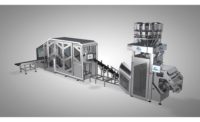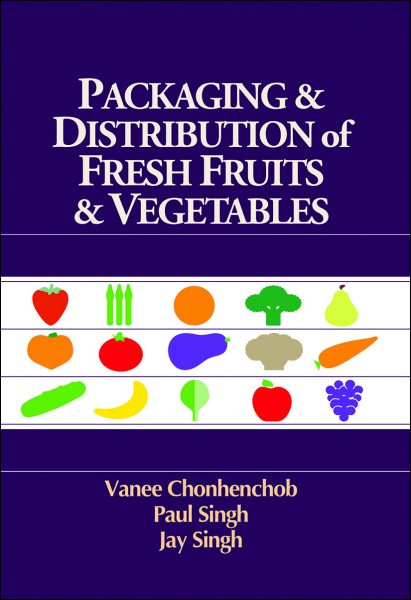Packaging flexibility

AMF Bakery Systems’ Articulating Arm Basket Loader has a four-axis robotic arm; multi-infeed, high-speed pick-and-place capability; and patented, application-specific, end-of-arm tools (EOAT). It handles a wide variety of basket- and case-loading applications.

The Versaloader Robotic Product Loader from AMF Bakery Systems uses a Gantry-style robotic arm to pick and place bread or buns into baskets, trays or cases. A quick-change end-of-arm tool (EOAT) uses 200 small suction cups to form a pattern by picking groups of products. It then compresses the pattern and loads it into the basket.

AMF Bakery Systems’ Product Orientor Loader serves both bread and bun lines, handling up to eight baskets or trays per minute. Features include adjustable guides for different size products, a dual strand conveyor and servo drives on the orientor disk, product pusher and window belt.

Colborne Foodbotic LLC offers a Combination Robotic Bread and Basket Handling System.

Douglas Machine Inc.’s Invex IM Case/Tray Packer features speeds of up to 25 cases or trays per minute, simple and repeatable changeover, a sanitary frame design and stainless steel washdown options. The Invex IM Series accommodates large size ranges and pack patterns for the food and beverage industries.

Douglas Machine Inc.’s TriVex is designed to erect, load and seal cases in one compact machine. The system handles flexible bags and pouches, semi-rigid and/or rigid trays, tubs, cartons and overwrapped products. Changeovers can be accomplished in minutes.

Ross Industries Inc.’s new family of inline tray sealers, the Inpack “IN” Series, is made in the U.S. and designed with flexibility in mind. The series features four models: IN450, IN450 Plus, IN650 (shown) and IN850. All feature a sanitary design with stainless steel washdown construction, a pneumatic lifting system, rapid changeover and single-point adjustment.

Stewart Systems offers a bottom-up basket stacker.

Stewart Systems’ case packing robot is shown with vacuum-cup end-of-arm tooling (EOAT).









Today’s packaging equipment is designed with flexibility in mind. This is good news for bakers and snack manufacturers striving to meet the changing consumer demands and eating habits.
Consumer demand for single-serve and on-the-go foods, for instance, has prompted bakers and snack manufacturers to offer products in smaller package sizes. However, packing product into smaller bags, boxes and other containers and loading these smaller packages into trays is more difficult than working with larger packages.
As upstream processes improve to accommodate more stock keeping units (SKUs) and shorter production runs, tray packing equipment now comes equipped with automated changeover to enhance flexibility.
A matter of convenience
When it comes to food, consumers are looking for convenience, such as ready-to-eat products in packaging with easy-peel lids or resealable tops, or in microwaveable containers. Also, as demand for longer shelf life continues—often with a concurrent desire for preservative-free—modified atmosphere packaging (MAP) is gaining in popularity.
“The trend continues toward consumer convenience and ready-to-eat/ready-to-cook meals,” says Jamie Usrey, president, Ross Industries Inc., Midland, VA. “These meals often include multi-compartmental trays or plates. There are other trends toward recyclability of packaging and minimizing waste by using resealable trays and lids. We see more applications for ‘in car’ snacks, where the tray fits into a vehicle’s cup holder.”
There is more variety on the foodservice side, too. Menus are expanding to give consumers more choices. “In the marketplace, the overall consumption of food may increase a bit, but it gets spread over a greater number of SKUs,” says Larry Gore, director, sales and marketing, AMF Bakery Systems, Richmond, VA. “That affects how you load product into packaging, so food processors need more flexibility on the production floor.”
Multiple SKU packaging options require more operating flexibility in tray packing equipment. As part of that trend, Wayne Slaton, senior director of sales, Douglas Machine Inc., Alexandria, MN, sees more efforts directed at smaller case and tray counts, as well as flexibility ranging from convenience store to club store sizing on the same machine.
Equipped for success
“The latest tray packing equipment can handle a variety of shipping containers—from plastic bakery baskets to corrugate boxes and even display-ready corrugate containers,” says John Keane, engineering product manager, post packaging and automation, AMF Bakery Systems. “The loading methods for each can be quite different and require different machine designs and technologies.”
More robotic operations see integration into tray packing equipment to handle a variety of products and packing patterns. “Robots are great at repetitive motion and can handle higher capacities and rates,” says Rick Rodarte, vice president of engineering, North American Baking Group, Stewart Systems, Plano, TX.
Tray packing tools can also pick and place in one step, from the pan or in-feed flight, directly into the receiving tray, according to Rick Hoskins, vice president, Colborne Foodbotics LLC, Lake Forest, IL. “The robot-driven end effectors feature precise, specified movement of each tool to reorient the product from pickup point to placement into the tray or container,” he says. “The system operates with smooth movements and can transfer high levels of product with low breakage.”
Tray/shrink systems can replace corrugated cases. Slaton notes that the machines produce retail-ready display trays that maintain product orientation for conical-shaped packages and film-only for bakery cartons, which reduces material costs. He also points to a full line of pouch handling systems “to address the product handling and secondary packaging needs of the growing number of pouch applications.”
Projected needs will help snack producers and bakers select from the wide range of tray handling equipment on the market. One particular robotic loader, says Gore, “gives bakeries and snack plants the flexibility to handle baskets and trays, to insert slip sheets and to do different types of case loading, which allows more flexibility in the packaging. We offer different types of packaging equipment—mechanical automation, gantry robotic (two-directional) and articulating arm robotic (three-directional). We provide multiple solutions to fit the production needs of bakeries and snack plants.” The robotic loader incorporates a high-resolution, individually programmable, vacuum end-of-arm tooling (EOAT) that can form a number of products and patterns and place them into cases, baskets and trays without a tooling change. It also incorporates programmable logic controller (PLC) programming, which reduces the need for additional programmer training and support.
Rodarte notes that a new EOAT is in development that can pick a pattern of bun or bread packages and load them into trays or baskets. The packages are staged, and the head is positioned over them. The head is zoned with the vacuum, and each zone is activated based on the picking motion and pattern. “This feature enables maximum use of tray capacity by filling it with the pattern that is best for each product,” he says.
Tray seal packaging equipment can incorporate an in-line approach that eliminates the need to fill tray carriers. Usrey notes that the system can produce a variety of sealed packages, including MAP, vacuum skin packaging (VSP) or simple lid sealing. He says that the system is offered in several sizes to accommodate various production requirements. The machines, he says, “are designed for simple operation, with a small footprint and quick-change tooling for different tray sizes.”
Packing challenges
Among the challenges involved in designing tray packing equipment for snack producers is their need for equipment that can handle high piece rates while maintaining package and product quality. Loading packages and trays when rapidly processing a high volume of pieces can result in damage finished goods.
Available space is another factor. A packaging area originally designed as a manual operation typically does not have much floor space available to add automation. The area between the wrappers and truck dock are normally filled with product waiting to ship, as well as empty containers. “Machine designs need to be creative and highly flexible to fit into an existing plant that is short on floor space,” says Gore.
Manufacturers are offering innovative solutions to help bakers and snack producers overcome many of these challenges. “One of the biggest selling points for our bakery and snack plant customers is tray/package presentation on the store shelf,” says Usrey. “One key piece of this presentation is the tray shape and appearance.” He notes that changing the tray shape and look can help the package stand out on the shelf at retail.
“Some customers are moving from simple, rectangular trays to unique, complex shapes,” says Usrey. “These special tray configurations can pose a serious challenge on the production floor.” Working closely with such customers ensures that the machine tooling is precisely built to seal complex tray shapes, he notes.
Manufacturers also are designing tray packing equipment to accommodate new food-safety regulations. “We are focusing on designing equipment that can be easily cleaned and has surfaces that do not hold flour dust,” Rodarte says.
As consumers continue to seek a wider variety of prepackaged solutions, manufacturers of tray packing equipment are adapting offerings to solve challenges faced by snack producers and bakers—both today and tomorrow.
Looking for a reprint of this article?
From high-res PDFs to custom plaques, order your copy today!

















